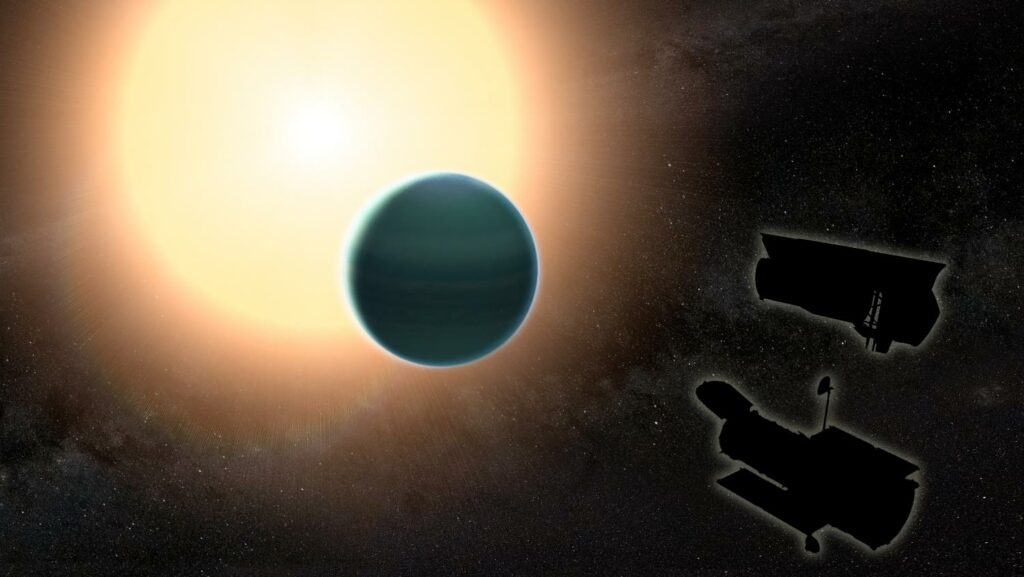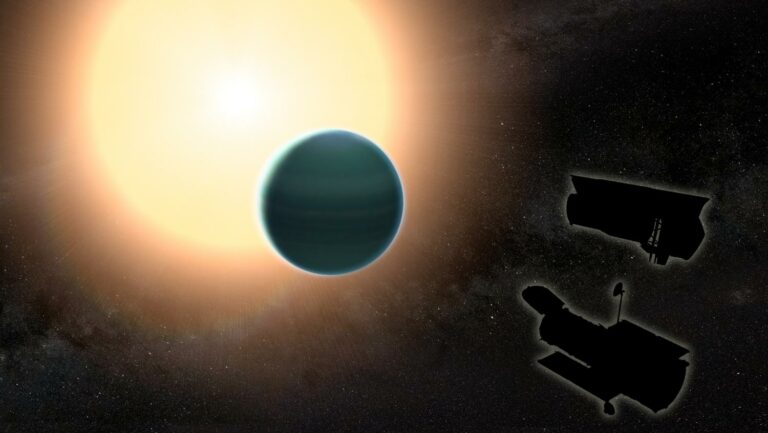Primordial Atmosphere Unearthed Surrounding ‘Warm Neptune’
A groundbreaking study has revealed new insights into the atmospheric conditions of a distant planet, which could have significant implications for our understanding of planetary formation in other galaxies. Led by Hannah Wakeford from NASA and Professor David Sing from the University of Exeter, an international team of researchers conducted an extensive investigation into a ‘Warm Neptune’ – a planet similar in size to our own Neptune but with a closer orbit to its sun. The study found that this exoplanet, located approximately 430 light years away from Earth, possesses an atmosphere primarily composed of hydrogen and helium, with minimal cloud cover.
These findings suggest that the planet likely formed closer to its host star or at a later stage in its solar system’s development, in contrast to the Ice Giants Neptune and Uranus. The implications of this discovery extend beyond the specific exoplanet, shedding light on the broader processes involved in the birth and evolution of planetary systems in distant galaxies. The research, published in the esteemed journal Science on May 11, 2017, marks a significant advancement in our understanding of exoplanet atmospheres. Professor Sing, from the University of Exeter’s Astrophysics department, expressed excitement about the findings, emphasizing that they highlight the diversity of exoplanet atmospheres and contribute to our ongoing quest to comprehend the formation of solar systems and their comparison to our own.

To investigate the atmosphere of the planet known as HAT-P-26b, scientists utilized data collected during the planet’s transits in front of its host star. These transits involve a portion of the starlight passing through the planet’s atmosphere, where certain wavelengths of light are absorbed while others are not. By examining the changes in the starlight’s signatures caused by this filtering process, researchers can deduce the chemical composition of the atmosphere.
In this particular study, the team combined data from four separate transits observed by NASA’s Hubble Space Telescope and two transits observed by NASA’s Spitzer Space Telescope. Through their analysis, they were able to obtain sufficient information to determine that the planet’s atmosphere is relatively cloud-free and exhibits a prominent water signature. This water signature represents the most accurate measurement of water to date on an exoplanet of this size.
The researchers utilized the water signature to estimate the planet’s metallicity, which indicates the abundance of elements heavier than hydrogen and helium. Astronomers calculate the metallicity as it provides insights into the planet’s formation process.
To compare the metallicities of different planets, scientists use the sun as a reference point, similar to how one would compare the caffeine content of various beverages to a standard cup of coffee. In our own solar system, Jupiter and Saturn, known as “Gas Giants,” have metallicities approximately five and ten times greater than that of the sun, respectively. This suggests that these planets are predominantly composed of hydrogen and helium. On the other hand, Neptune and Uranus possess higher metallicities, approximately 100 times that of the sun, indicating a greater abundance of heavier elements.
Scientists believe this disparity in metallicities arose due to the formation of Neptune and Uranus in a region located towards the outer edges of the vast disk of dust, gas, and debris that encircled the young sun during the early stages of the solar system’s development.
In contrast to Jupiter and Saturn, which formed in a warmer region of the disk and encountered less icy debris, a new study has found that HAT-P-26b defies this trend. The research team, led by Hannah Wakeford, a postdoctoral researcher at NASA’s Goddard Space Flight Center, discovered that HAT-P-26b has a metallicity only about 4.8 times that of the sun, much closer to Jupiter’s value than Neptune’s. Wakeford expressed her excitement about this unexpected result, highlighting the importance of exploring the atmospheres of alien planets. Co-author Tiffany Kataria of the Jet Propulsion Laboratory also emphasized the significance of having such comprehensive data sets for a warm Neptune, considering it a noteworthy achievement.
This article is republished from PhysORG under a Creative Commons license. Read the original article.
Do not forget to share your opinion with us to provide you with the best posts !




0 Comments